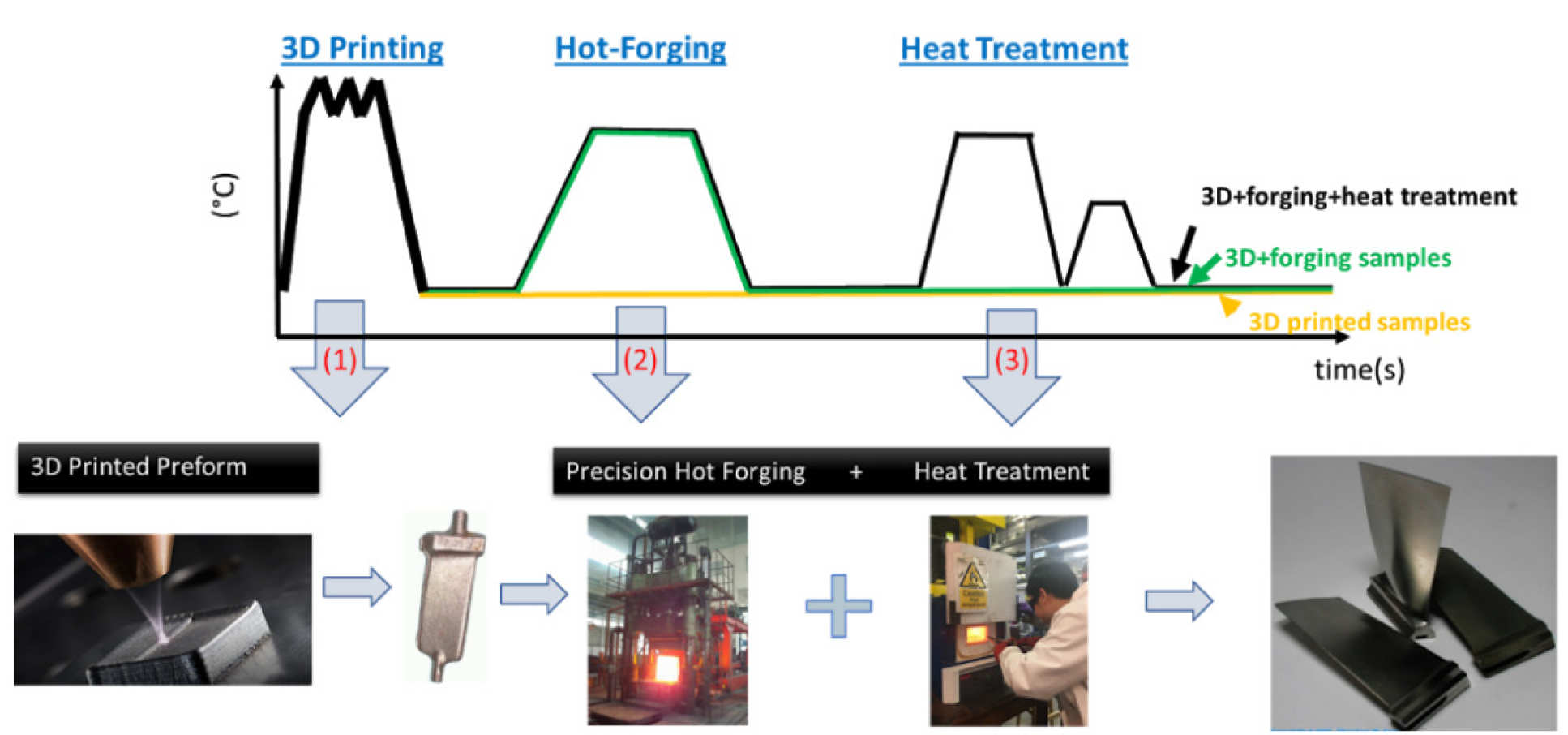Additive manufacturing and subsequent forging
Researcher: Mr Zinong Tan
Supervisor: Dr Jun Jiang
Summary
Additive Manufacturing (AM) recently captures our imagination and leads the industrial revolution 4.0. This technique has numerous advantages compared to the conventional manufacturing methods namely: near final geometry finishing, virtually no limitation in the geometry of the parts, minimal materials waste, direct production from digital design.
However, AM technique is currently unable to produce high value and safety-critical components. Given that with great care, some of the AMed parts can satisfy the mechanical performance requirements for the aerospace industry, the AMed parts are unable to enter the market of heavy load-bearing and safety critical components. The AMed parts show less promising mechanical performance of AMed parts compared to the conventionally wrought parts. From the material science point of view, the AM technique is essentially a high thermal gradient casting process involving rapid melting and cooling processes. This results in two intrinsic microstructural defects, namely, the coarse and inhomogeneous grain size distribution and the large volume fraction of porosity. These two undesired microstructural features significantly reduce the strength, ductility, fracture toughness and fatigue resistance of AMed parts and thus limit the AM applications to less safety-critical components.
To tackle these challenges, a disruptive technique combining AM with subsequent hot precision forging has been proposed to produce high load bearing components. AM technique could be used to produce preforms, which are near their final shapes, and subsequently subject these preforms under a hot precision forging process.



